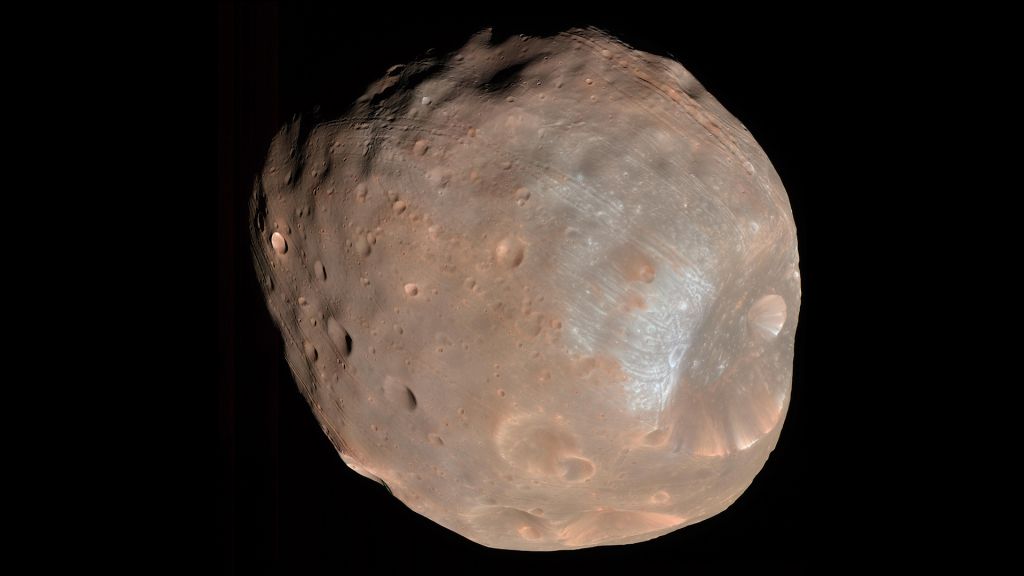Sunlight Shines on Mars Moon in Detailed New Photos from Orbiter
A brief spacecraft encounter with the Martian moon Phobos shows off the tiny world's surface in detail.
The European Mars Express mission, in orbit around the Red Planet, recently glimpsed Phobos as the moon passed by at a distance of 1,500 miles (2,400 kilometers). While that's a faraway look, Mars Express is the only spacecraft that can get a glimpse of Phobos right now.
Mars Express snagged 41 images of Phobos on Nov. 17, showing craters, marks, and even long furrows or scratches on the surface. "The image sequence shows Phobos at a number of angles — the moon can be seen rotating and slowly lightens up before it begins to darken again," the European Space Agency said in a statement. (The image sequence also shows a slight oscillation from spacecraft movements.)
Video: See the Awesome New Views of Phobos from Mars Express!
More: Moons of Mars: Amazing Photos of Phobos and Deimos

Clearly visible are a number of features. One is Stickney Crater, which takes up nearly half of Phobos' 16-mile (26 km) diameter. The spacecraft also imaged the furrows, in hopes of further unveiling how these features formed. The current thinking is that debris or the tug of Mars' gravity on Phobos could have made these scratches.
The science team said it was especially pleased that Mars Express nabbed images of Phobos from several "phase angles," meaning the angle between the light source (which was the sun) and the observing spacecraft.
"Images acquired across a range of phase angles … are incredibly useful for scientists," ESA added. "Different shadows are cast as the sun's position changes relative to the target object: This illuminates and highlights the surface features and enables calculations of feature height, depth and relief and reveals much about the roughness, porosity and reflectivity of the surface material itself."
Get the Space.com Newsletter
Breaking space news, the latest updates on rocket launches, skywatching events and more!
The spacecraft will get its next chance to capture images of Phobos in such direct solar light in April and September.
- The Grooves of Phobos: A Mars Moon Mystery in Pictures
- New Photos: Mars' Biggest Moon Phobos Up Close
- European Probe Snaps Color Photos of Martian Moon Phobos
Follow Elizabeth Howell on Twitter @howellspace. Follow us on Twitter @Spacedotcom and on Facebook.

Join our Space Forums to keep talking space on the latest missions, night sky and more! And if you have a news tip, correction or comment, let us know at: community@space.com.

Elizabeth Howell (she/her), Ph.D., was a staff writer in the spaceflight channel between 2022 and 2024 specializing in Canadian space news. She was contributing writer for Space.com for 10 years from 2012 to 2024. Elizabeth's reporting includes multiple exclusives with the White House, leading world coverage about a lost-and-found space tomato on the International Space Station, witnessing five human spaceflight launches on two continents, flying parabolic, working inside a spacesuit, and participating in a simulated Mars mission. Her latest book, "Why Am I Taller?" (ECW Press, 2022) is co-written with astronaut Dave Williams.









